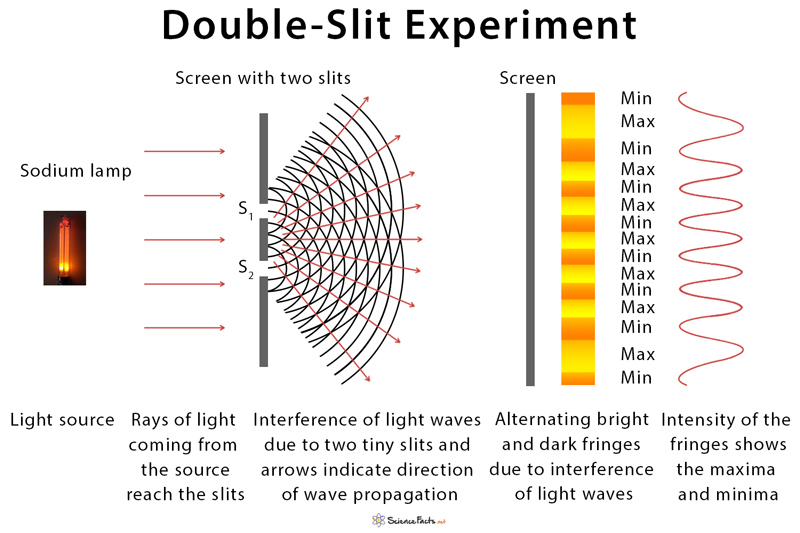Double Slit Experiment
What is the Double-Slit Experiment?
The double-slit experiment is a test that demonstrates light can fundamentally display both wave and particle features, also known as wave-particle (photon) duality. It consists of two closely-spaced slits in front of a light source such that a beam of light passing through them is split and projected on a screen placed far from the slits. The split beam forms two coherent sources of light. A pattern of bright and dark fringes appears on the screen due to the interference of light waves coming from these two sources. Interference is the phenomenon in which when waves are superimposed, they may reinforce or cancel each other out. It is most pronounced when the wavelength of the radiation is comparable to the linear dimensions of the slits.
The history of this experiment goes back to 1801 when British polymath Thomas Young demonstrated the wave nature of light and hence, is often called Young’s double-slit experiment.
Double-Slit Experiment Equation
A monochromatic light source falls on a screen that contains two parallel slits, which serve as the sources of coherent light. The light waves emerging from the two slits then interfere and form an interference pattern on the viewing screen. The bright fringes or bands correspond to interference maxima, and the dark fringes are interference minima.
To locate the fringes from the center of the screen, one assumes that the distance between the screen and slit is much greater than the distance separating the slits. Also, the separation between the slits is much greater than the wavelength of the monochromatic light.
By measuring the separation between the fringes and knowing the distance of the screen from the slits and distance between the two slits, it is possible to determine the wavelength of light.
FAQs
Ans. The double-slit experiment was a groundbreaking test that decisively proves the theory that light behaves as a wave.
Ans. Yes. Many researchers have performed the double-slit experiment on electrons and found similar results to that of photons.
Article was last reviewed on Wednesday, June 3, 2020









